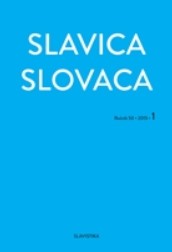Historicko-jazykové súvislosti termínov súd – sudca – súdenie vo veľkomoravskom práve
Historical and Linguistic Contexts of the Terms Court – Judge – Judging in Great Moravian Law
Author(s): Róbert JágerSubject(s): Christian Theology and Religion, History of Church(es), Historical Linguistics, Biblical studies
Published by: Slavistický ústav Jána Stanislava Slovenskej akadémie vied
Keywords: Great Moravia; Court; Judge; Judging; Old Slavic Language; Old Slavic Church; Language;
Summary/Abstract: In this publication, we primarily point out how court, judge and judging were referred to in the Nomocanon (and secondarily in other normative texts of the Great Moravian period). We will also pay attention to the origin of these terms and try to determine whether these terms were also known in Old Slavic Language, i.e. whether they were also known in the domestic language environment of Great Moravia, or whether they were brought to this environment through the activities of Constantine and Methodius. At the same time, we will try to answer the question of who performed the judging and whether the judging was performed collectively or individually in the given period. We also pay attention to how the trial was carried out, whether it was institutionalized or not. We will also try to answer the question whether it is possible to assume the existence of ecclesiastical courts already in the Great Moravian period. In terms of secular regulations, however, it is likely that written legal regulations did not play a major role in the form of valid law enforced by the state. However, that probably should not even have been its primary purpose.
Journal: Slavica Slovaca
- Issue Year: 58/2023
- Issue No: 02
- Page Range: 225-236
- Page Count: 12
- Language: Slovak

